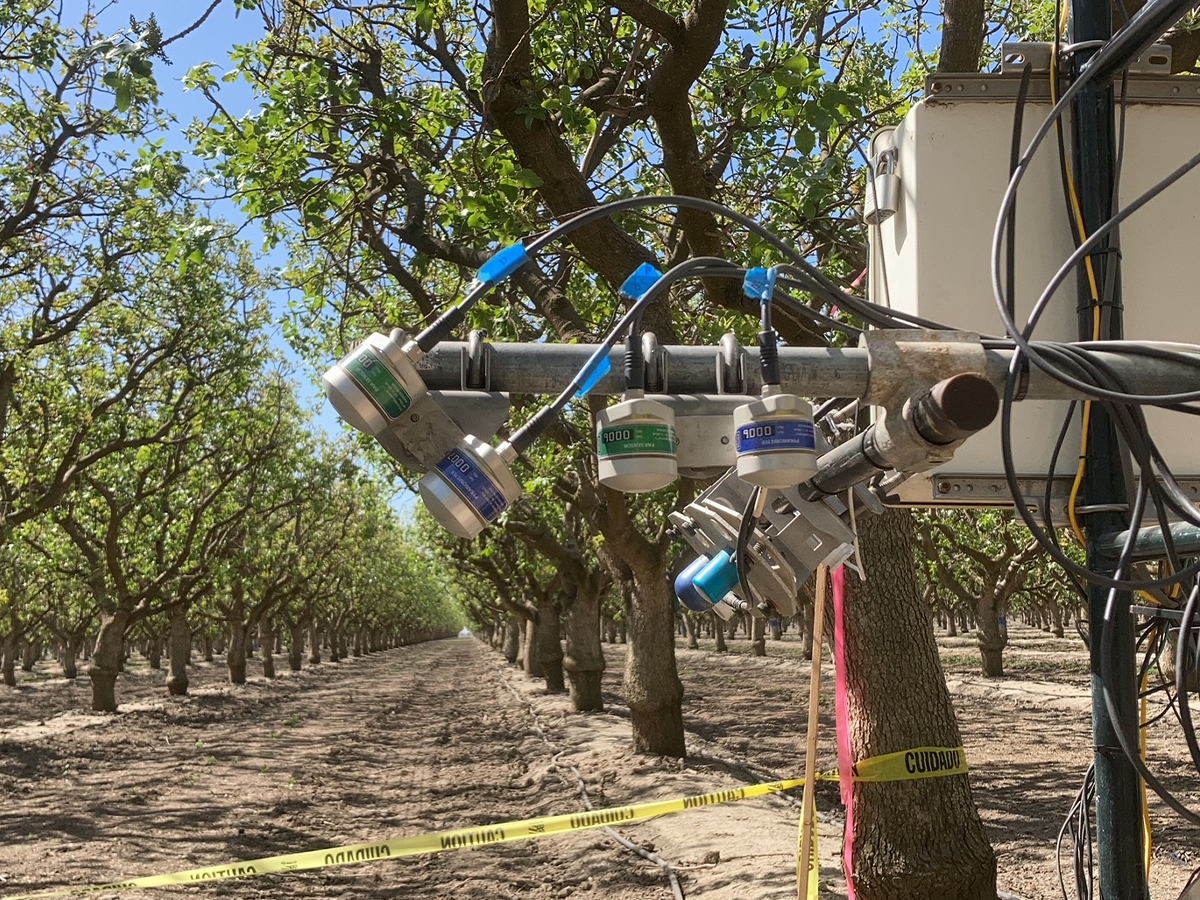
Cover cropping in tree nut production has been recommended as a soil health management practice. Field trials are now being done to determine additional benefits to orchard production. The trials are being done in mature pistachio orchards grown under microirrigation systems with winter cover crops in comparison to clean-cultivated orchard floors.
Daniele Zaccaria, Agricultural Water Management Specialist at UC Davis, is leading the research effort funded by the California Pistachio Research Board. His research team includes Catherine Mae Culumber, UCCE nut crop advisor in Fresno County, and Khaled Bali, irrigation water management specialist at UC Kearney Agricultural Research and Extension Center in Parlier, Calif.
Winter cover cropping has become common in almond and walnut production, but information on its effects on water use efficiency in pistachio orchards is limited. Zaccaria, his research team and two grower cooperators are looking at effects a winter cover crop and the vegetation residues left on the ground after mowing have on water productivity.
The main potential benefit being measured and documented is the effect the cover crop residue has on light interception and distribution within the tree canopy. When a cover crop is mowed, but not incorporated in the soil, Zaccaria said the bright-colored residues of inactive vegetation might reflect sunlight back into the canopy, increasing the photosynthetic active surface of the orchard. In other terms, the lower part of the trees’ canopy may capture part of the radiation reflected by the vegetation residues left on the orchard floor. Intercepting this additional amount of radiation could potentially increase the tree transpiration and produce more carbohydrates, thus increasing the water productivity, which expresses the nut yield produced per unit of water evapotranspired.
The cover crops being tested are Blando Brome, which produces a medium-tall vegetation cover, and Radix Poa Bulbosa, which produces a short vegetation grass cover.
John Gebhardt, who manages more than 20,000 acres of walnuts, almonds and pistachios in the Central Valley, said his experience with winter planted cover crops has shown reduced surface sealing and increased organic matter, which creates a habitat for microbes. Gebhardt said the microbes assist plants in assimilating available nutrients and moisture. While growing, the cover crops also provide habitat for beneficial insects.
Zaccaria said the trials will document the resource-efficiency gains that pistachio growers could pursue with winter cover cropping, which could result from better interception of solar radiation by the tree canopy, increased soil oxygen concentration, higher soil oxygen diffusion rate, improved root health and activity, and better soil hydraulic properties.
















